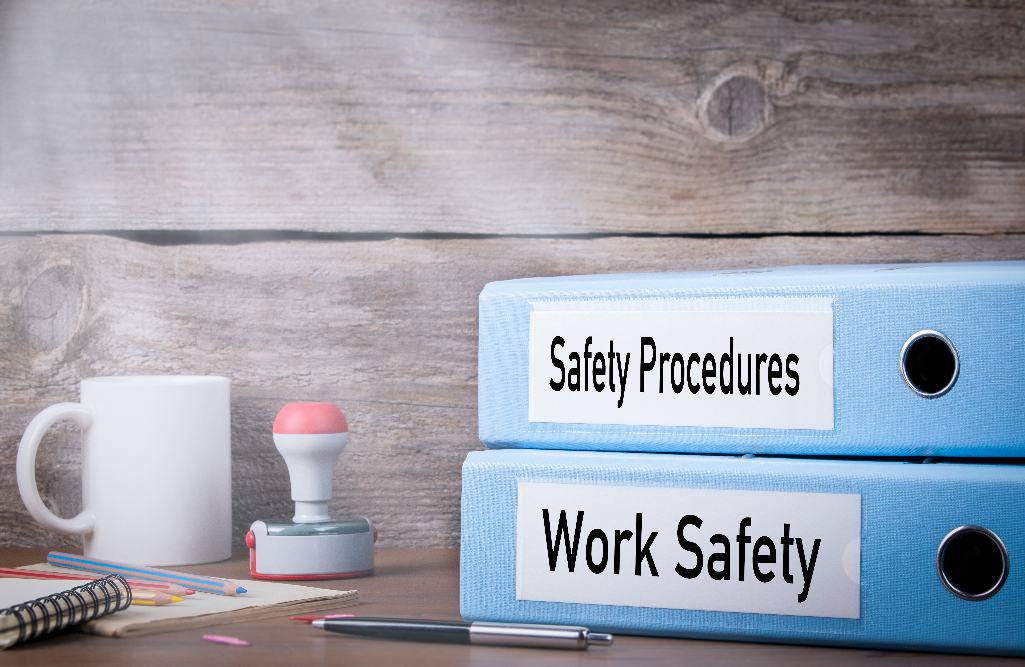We’ve already asked Wellbeing Leads, HR Leaders and Rewards/Benefits Leaders to tell us what their burning industry issues are, now it’s the turn of the Health & Safety professionals. They also elaborate on how they see their perspective as different from other roles which have a wellbeing remit.
Maria Anderson, Global Head of Health Safety and Wellbeing, People Shared Services, Cambridge University Press
What’s the burning question for me?
It’s this:
How as an organisation can we think strategically and truly put wellbeing on the board agenda?
Also, as a global organisation, how can we make sure that our wellbeing programme is truly global, and considers the needs of a multicultural, and very diverse community?
As for how my perspective on wellbeing is different coming from a H&S background, I’d say we learn how to manage risk and how to strategically think through the solution (plan, do, check, act).
By experience, I have been able to implement and use that knowledge on my wellbeing strategy.
Wellbeing can be managed, you need to understand the data and the needs, you need to understand the problem first, have clear objectives and then put your plan together, but very importantly check effectiveness and enter a continuous improvement process.
Also, H&S professionals really understand culture and behavioural change and we can transfer those skills to the wellbeing agenda.
Paul Hendry, Global Vice President, Health, Safety and Environment, People and Places Solutions, Jacobs
Wellbeing is such an important indicator as a Health and Safety leader. Poor Wellbeing can lead to an erosion of culture, can contribute massively to unintended events with tragic consequences, can impact morale, attrition and have a negative impact on productivity.
Without measuring Wellbeing we can’t really focus our efforts on what is impacting wellbeing and the risk this brings. I don’t mean a culture survey which is sent out by HR annually and then the findings produced 6 months later: I mean real-time measuring and then dealing with the issues as they arise.
This could be an individual going through a tough time or indeed a group of workers who are struggling with a poor boss. The financial implications of poor wellbeing also need to be considered as a H&S leader.
If the organisation is struggling with productivity, attrition, etc, then this has a knock on effect on investment in people, tools and training.
Carole Smets, Group Health & safety Director, Pernod Ricard
Workplace wellbeing is a critical aspect of employee satisfaction, productivity, and retention, making it a top priority for Pernod Ricard.
The biggest challenges are:
- Governance (RACI) to manage this topic: HR and/or HS function
- Developing risk assessment, action plan and KPIs to track progresses
- The fact there are multiple small actions developed randomly with tools to support individuals, rather than global policy and framework including collective approach
- Lack of awareness, as stigma means we are still probably underestimating the risk
What keeps me up at night? The suicide of a collaborator.
Malcolm Staves, Corporate Vice President of Health & Safety, L’Oréal
Our biggest challenge to health, safety and wellbeing is getting the messages out to all our employees and adapting these to local culture in a way that makes sense. What is a priority, say, for someone in the UK is not necessarily a priority, at present, for people in India or China.
In L’Oréal we have over 85000 employees and that it itself is a big challenge. A caring company needs to really consider a total work health approach, it can’t just be about workplace wellbeing. This is why we have our “Share&Care” program as well as “Safe@Work-Safe@Home” where we put employees and their families at the heart of what we do.
What keeps me up at night? Whether we can reach out and be there for everyone when they need us.
Gareth Davies, Health and Safety Director – International, G4S, An Allied Universal® Company
The biggest challenge that I see for wellbeing is the same in this role as it has been others: it needs to move from being viewed as a standalone programme, led by one individual or team, to being a thread that runs through all facets of an organisation as a common thread.
This is a journey that Health and Safety (in a traditional sense) has been on for some decades, where you see the ownership of safety being unified and embedded, rather than being standalone. The approach is mature, effective and naturally evolving.
Where it remains standalone, even if as a stated priority, the approach is immature, initiative driven, reactive and not really having the positive business impact it could have.
I have worked in HR for large parts of my career so, in general, my perspective will be close to that of HR Leaders, however there are some significant differences:
1) The acute impact on performance and decision making that is safety critical. The human factor that means someone’s decision making capability is down by 10% sending an email vs dealing with an active event
2) Methodical approach to resolution. In many ways risk / safety leaders approach wellbeing as any other risk exposure and work through sources, determine specific mitigations and measures
Leeanne Young, Health and Safety Manager, getliving
The biggest challenge for me has always been around highlighting the obvious parity between health, safety, and wellbeing; you can’t achieve success in one area without focusing on the others.
Many years ago H&S was an ‘add on’ to employees’ roles, or seen as the responsibility of H&S Managers and Advisors. However, through persistent awareness raising and increasing understanding of the topic, this changed. Certainly this is the case in high-risk industries, but there is still some way to go in others.
But I now see this being the case for workplace wellbeing; it is treated as an ‘add on’ to existing roles and doesn’t get the focus it needs.
H&S and HR leads, at the top of the organisation, really need to work together to develop their strategies, roadmaps and action plans to ensure that all elements of Health, Safety and Wellbeing are:
a) fully considered
b) form part of an organisations’ holistic vision and values
c)are aligned to all other organisational plans
d) are linked to employees’ objectives.
All activity and planning should be joined up to achieve success and keep people safe; physically and psychologically.
Liz Skelton, Director of Health & Safety, The Guinness Partnership
The issues affecting social housing are quite unique… we have increased pressure from having to deliver new government policy and new legislation, a resident base who are facing more issues related to mental health, the cost of living crisis and increases in violence and abuse.
Our relationship with residents sometimes means that our employees are often having to fill complex gaps. Our key challenges are making sure that our employees are both professionally and mentally able to manage these complex cases.
How does my perspective on wellbeing as someone with a H&S remit differ from, say, an HR director or Wellbeing Leader?
I’d say it doesn’t. Our organisation has a multidisciplinary team that work really closely together we understand the legal implications of not doing this right but also the productivity benefits of doing this right.
Dr Steve Iley, Chief Medical Officer and Global Head of Occupational Health and Safety, Jaguar Land Rover
Good safety is linked and supported by good wellbeing and vice versa.
We shouldn’t see them as two separate things but more like the layers in a pyramid.
Good safety is the first and most important layer, without this you will never achieve good wellbeing.
Karl Simon, Former Chief Health, Safety & Security officer at Thames Water, now Cabinet Advisor and Consultant
There are many challenges faced in the role as a modern day health and safety professional, when it comes to employee wellbeing, some of which include having awareness of, or having to deal with:
- Addressing the Work-Life balance between work and personal life, which can be challenging for many employees. Long working hours and excessive workload can lead to burnout and negatively impact employee wellbeing
- Smashing the Mental Health Stigma, as many employees hesitate to seek help for mental health issues due to the fear of reprisal from line manager perception or impact on their job, which in turn if left unresolved can affect their overall wellbeing and job performance
- Aiding physical health and how to deal with sedentary work environments. The lack of physical activity employees in these roles can contribute to health problems, affecting employee wellbeing.
- Avoiding workplace stress is extremely serious as high levels of stress at work can lead to various health issues, including anxiety and depression
- Dealing with poor communication and support from supervisors and colleagues can lead to feelings of isolation and dissatisfaction, so a supportive work environment is important
- Removing unrealistic expectations and excessive workloads which can lead to stress and job dissatisfaction
- Setting manageable goals and expectations is vital for employee wellbeing
- Implementing Financial Wellbeing support that can aid in removing financial stress, as this can have a significant impact on employee wellbeing. Providing financial education and support can help employees manage their finances better
- Helping Diversity and Inclusion through creating an inclusive work environment where employees of all backgrounds feel valued and included is essential for their wellbeing.
How do I think my perspective on Wellbeing differs from, say, an HR / Wellbeing / Rewards leader?
- In my experience both roles contribute to employee well-being and the overall success of the organisation. They work in collaboration to create a holistic approach to employee welfare and workplace effectiveness. The health and safety professional has a detailed understanding of the human anatomy through the health education so the physical and psychological aspects of how the body is affected from the workplace is well understood within H&S
- HR professionals can often have a perceived stigma within the workplace of being largely negative through having to play the role of disciplinarians on occasion at work, this can be exacerbated at times where perhaps an organisation may need to make difficult decisions regarding headcount cuts, this can in turn lead to a culture of ‘don’t tell HR’
- The H&S professional has a very important role to play in the creation of a culture of care in the workplace and does this through encouraging high levels of transparency through implement policies that empower people to challenge unsafe acts or unhealthy behaviours observed












